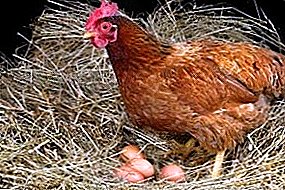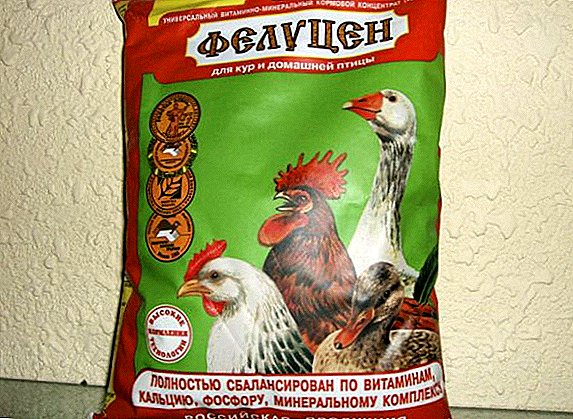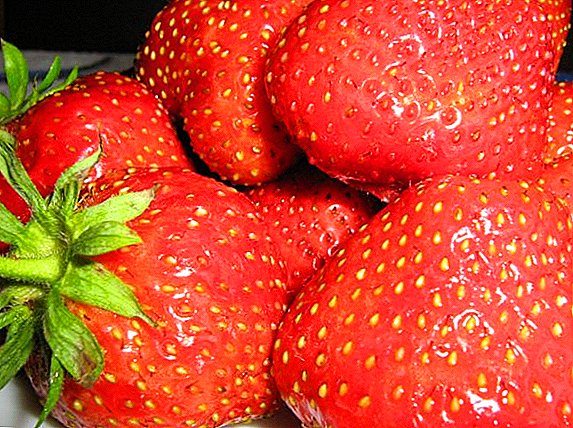
Domestic chickens are not only constantly fresh eggs to the table, but also dietary meat.
The maintenance of laying hens in the summer cottage or the plot of land is not so difficult.
And yet, some features of their cultivation is necessary to know.
There are two ways to purchase chicks.:
- take home at home;
- buy diurnal young.
Breeding laying hens at home
If the household does not contain chickens for the first year, then some of them can serve as hens that hatch eggs and replenish the herd with young.
Chickens are also removed using small domestic incubators. Most often, the owners buy day-old chickens in poultry markets or in industrial hatcheries. When buying young stock, you need to make sure that it is the chickens of the egg breed.
Now the most famous are the white Russian chickens, Minorki, Kuropatchatye and white Leghorn.
 In the life of little chickens, there are three very important periods for their further development:
In the life of little chickens, there are three very important periods for their further development:
- first eight weeks (0-8);
- the next five weeks (8-13);
- age from the thirteenth to the twentieth week (13-20).
In the first stage, the chicken develops enzyme, immune and cardiovascular systems, internal organs, bone and muscle tissue grow, skeleton and plumage are formed.
In the next period, adipose tissue grows on the developed skeleton, ligaments and tendons develop. The third period is characterized by rapid development of the whole body, the reproductive system. There is a restructuring of the whole organism.
Each period in the life of a chicken is important in its own way, but special attention should be paid to the very first weeks: compliance with the temperature regime, feeding ration, degree of illumination, protection from drafts, and so on.
When forming the future population of laying hens, the principle of herd uniformity should be adhered to, when all the chickens have approximately the same height and weight. Weak chickens are repelled by the feeder, pecked at every opportunity. As a result, such individuals are stunted, sick, and then die.
Rearing with a hen
 A mother hen not only heats the chickens, but also teaches them to feed.
A mother hen not only heats the chickens, but also teaches them to feed.
At the beginning of the withdrawal, dried babies must be taken from the nest.
This must be done for several reasons.:
- the chicken can press the chicken down or squeeze it between the eggs;
- the chick may fall out of the nest.
And in fact, and in another case, the hen will worry, may leave the nest prematurely. Hatching eggs from chickens are placed in a box on a soft bedding and transferred to another warm room so that they do not disturb the hen with their squeaks.
The eggshell is also removed from the nest. The last 2-3 chickens are left in the nest, allowed to dry thoroughly, then the brood is carefully planted.
If the conclusion turned out to be not very high quality, and the chickens turned out to be few, you can add to them the ones purchased on the market or bred in the incubator.
Moreover, the incubator youngsters are planted together with the bred at the same time, since later the chicken will be able to distinguish between "his" and "strangers" and will begin to peck at strangers. Under the chicken of average size, you can allow up to 20-25 kids.
 Shabo is a breed of chickens, personifying beauty and compactness. Their small size and nice appearance are conquering the hearts of many poultry farmers.
Shabo is a breed of chickens, personifying beauty and compactness. Their small size and nice appearance are conquering the hearts of many poultry farmers.Feeding cocks has its own characteristics, different from feeding ordinary chickens. Read more ...
The hen with chickens should be in a dry, warm and bright room. Food and water must be kept constantly fresh. From the first days they feed chickens with crushed hard-boiled egg and dry millet.
It is better to make the feeder with a soft bottom, since the beaks of small chickens are gentle and can be injured on a rough bottom. Experienced housewives sometimes tie a hen by the foot on a long soft rope.
The length of this rope should be such that the chicken freely reaches the drinker, but cannot turn it over. The chicken is like a weedy bird, likes to rake everything in feet in constant search for foodtherefore, troughs and drinkers can fall under rowing paws.
Growing chickens under the hen removes many problems:
- no need to worry about additional heating of the young;
- the chicken independently teaches babies to feed by sounding and tapping with its beak on the bottom of the feeder;
- the hen warns the chicks of danger and protects them.
Without hen
 For day-old chicks prepare a warm and bright room.
For day-old chicks prepare a warm and bright room.
The temperature in this room must be maintained up to 25-28 degrees Celsius. The first feeding of young animals is carried out on a soft bedding, so that they do not damage the delicate beaks.
Food is scattered, and then tapped with a finger, imitating the tapping of the hen’s beak. Chickens react to knock and try to peck themselves.
Immediately set next trough and drinkers with water. When the chicken learns to peck the food, he will look for him in the feeder.
Feeders are made in such a way that the young could only put their heads in there and not climb with their legs. Otherwise, the food will be constantly contaminated, and then scattered throughout the floor. Now on sale there are many different drinkers for poultry.
But a novice poultry breeder can use at first a device tested over the years from a saucer and a glass. Pour fresh water into a regular glass, cover with a saucer and gently turn it over.
Under the edges of the glass they enclose a pair of matches from opposite sides, breaking off previously the sulfuric heads. The water in the saucer will be constantly on the same level until the glass is empty.
Such drinkers are convenient only in the first week of chickens until they learn to take off to a glass and turn it over. Then you need to install more sustainable drinkers.
To create a comfortable microclimate, a lamp is installed under which the chicks love to be heated. If the room is not warm enough, the youngsters gather in a heap, climbs on each other.
There is a danger of suffocation and death of chickens. At a comfortable temperature, the kids are actively moving or sleeping separately from each other.
Building a chicken coop
 Grown up youngsters are transferred to a chicken coop specially prepared for these purposes.
Grown up youngsters are transferred to a chicken coop specially prepared for these purposes.
If this is an old, previously used building, then it is necessary to carry out repairs. The walls and ceiling must be limescaled to sanitize them.
The perches and nests for laying eggs should also be processed. If there is an old bedding, it should be removed completely, the floor should be well treated and a new bedding material should be laid.
When building a new chicken coop, some requirements must be considered:
- the distance from the apartment building must be at least 10 meters;
- the place of construction should not be located in a lowland and be flooded with flood waters;
- in case of a chicken coop, it is necessary to provide a walking area, preferably with large trees growing on it, which create a natural shadow;
- if there are no trees on the walking area, then a shed must be built to protect it from the sun and rain.
The size of the coop is determined from the calculation 3-4 hens per square meter. Material for construction is chosen according to financial possibilities and established traditions in the area.
This may be a brick, wood, stone. Sometimes the walls are made of cinder. In any case, they should be warm, not freeze through in winter and not fall to warm in hot summer.
In the hen house must be:
- window in any wall except northward;
- perches;
- nest for laying eggs;
- manhole - exit to the walking area;
- place for feeders and drinkers and sand baths;
- lighting.
Perches are made from peeled poles or wooden planks. Wooden perches should be smoothly planed so that chickens do not hurt their feet.
If poles are used for perches, then they should be thick enough so that they do not bend under the weight of chickens, and also so that the paws tightly embrace them and do not slide. The distance between the slats should be at least 0.5 meters so that the droppings of the chickens sitting above do not fall on the lower ones.
For timely and convenient removal of litter in the hen house perches is desirable to do on shedsso that they can be raised at the time of cleaning.
Nest for eggs arranged in the least lit place. The number of nests is determined from the calculation: one nest for 4-5 laying hens. It is advisable to carry out the entrance doors with a vestibule so that the cold air in winter does not immediately go into the hen house.
The exit to the paddock should be done with a door that will close at night and in the cold season.
Do I need a rooster?
 If the purpose of keeping laying hens is only to obtain fresh eggs and chicken meat, then the rooster in the chicken herd is optional.
If the purpose of keeping laying hens is only to obtain fresh eggs and chicken meat, then the rooster in the chicken herd is optional.
But we must bear in mind that the eggs obtained will be unfertilized and unsuitable for incubation and incubation. And the chicken coop without a loud rooster cock is not a chicken coop. To have your eggs for the further updating of layers, there must be a rooster in the farm.
Usually, one rooster for 10-15 hens is enough. If there are more hens, then one rooster is indispensable. This is where the difficulties arise.
The fact is that males do not tolerate rivals in their chicken harem, between them there are constant clashes, fights. This has a negative effect on chickens. It is desirable that fighters live in separate enclosures, each with their own chickens.
Have a separate house and a plot of land with him and buy chicken eggs in the store? Or make a minimum of effort and acquire their laying hens? Everyone chooses himself.












